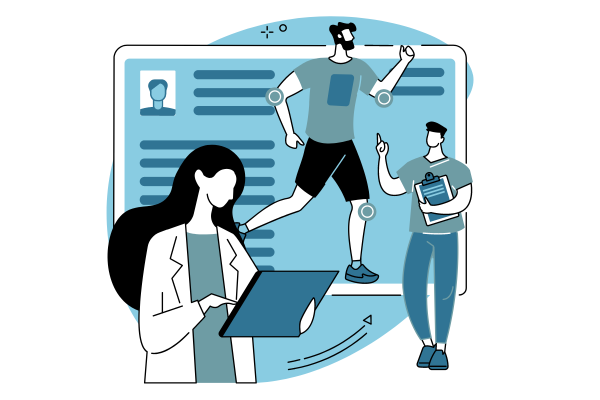When recovering from an injury, there are a number of tools you can use to speed up healing time and improve healing quality. These include rehabilitation, activity modification, bracing and nutrition. One of the most important factors for injury healing that is underappreciated and often overlooked is quality sleep. A lack of sleep or poor quality sleep impedes healing and is linked to an increased injury risk. As well, the position you sleep in can also have an impact on injury recovery and pain.
How does sleep impact healing?
Muscles, bones and other tissues repair and regenerate while you sleep. Two important mechanisms through which tissue repair happens relate to blood flow and hormones. Blood flow is necessary for healing. It brings in healing properties, oxygen and nutrients and flushes out the damaged cells and waste products. Blood flow increases to your muscles during the deep stage of sleep. This makes sleep especially important for the recovery of tendon and ligament injuries, such as golfer’s elbow or an ankle sprain, due to the naturally low blood supply to these tissues.
During deep sleep, your body also releases various hormones that stimulate muscle repair and growth. Growth hormones are released from the pituitary gland in the brain. These growth hormones help to build, maintain and repair muscles, tendons and ligaments. Another hormone, prolactin, is also released while you sleep to assist in the regulation of inflammation at night.

How does sleep position affect injury recovery?
Anyone who has experienced an injury or musculoskeletal pain knows how difficult it can be to find a comfortable position to sleep at night. And once you’ve fallen asleep you may stay in that position for hours. It’s actually possible to aggravate injuries at night simply due to the position you fall asleep in. Fortunately, there are some adjustments you can make to make sleeping with an injury easier and less painful. Here are some suggested sleeping positions for different injuries:
Upper body injuries: Lie on your back or unaffected side. If lying on your side, place a pillow under and in front of the arm for support so it does not fall forwards. If lying on your back, place a pillow under your arm so it doesn’t fall downwards toward the mattress.
Lower body injuries: Lie on your back with a pillow under the affected leg, or on your unaffected side with a pillow between your knees for support and cushion.
Neck injuries: Keep your neck in line with your spine and not flexed forward. Whether you are on your back or your side, your pillow should fill the space under your head and shoulders without causing your head to sit higher or lower than your spine.
Low back pain: Keep your spine and pelvis in line with each other. If lying on your back, place a pillow under your knees to take pressure off your low back. If lying on your side, place a pillow between your knees to support and line up your hips and pelvis.
Our Athletic Therapist, Crystal, can help you find an optimal sleeping position while you are managing your injury or pain. Contact her today for an individualized treatment and rehabilitation program, and get back on the road to recovery!
Crystal Bartkowski,
Certified Athletic Therapist
